Firstly, some breaking news:
Russia has finally downed one of those pesky, extremely expensive American drones buzzing about Crimea in the Black Sea.
A Russian Su-27 air interceptor harassed an American MQ-9 Reaper, dumping fuel onto it before ramming its propeller, causing it to fall into the Black Sea.
“Our MQ-9 aircraft was conducting routine operations in international airspace when it was intercepted and hit by a Russian aircraft, resulting in a crash and complete loss of the MQ-9,” Air Force Gen. James B. Hecker, commander of US Air Forces Europe and Air Forces Africa, said in the statement. “In fact, this unsafe and unprofessional act by the Russians nearly caused both aircraft to crash.”
This is done on purpose of course so as to keep a sense of diplomatic plausible deniability. It allows Russia to maintain an un-aggressive posture with the excuse that ‘we didn’t technically shoot down the drone with missiles/guns’, and it has more the air of an ‘accidental bump’ rather than deliberate shoot down.
🇷🇺🇺🇲❗️ At the site of the fall of the wreckage of the American drone, the Black Sea Fleet organized their search and recovery on board.
A helicopter of the Black Sea Fleet of the Russian Federation was also involved in the search for the wreckage.
Sounds like Iran is about to get itself a brand new MQ-9 Reaper to reverse engineer. Maybe China too?
The US is of course feigning outrage, calling the attack ‘unprofessional’.
“Several times before the collision, the Su-27s dumped fuel on and flew in front of the MQ-9 in a reckless, environmentally unsound and unprofessional manner,” the US military complained, accusing the Russians of “a lack of competence.”
Enironmentally unsound? Quick, someone call Greta!
Must US be reminded, as I wrote about in this article:
—that Russian pilot Pyotr Nesterov in fact pioneered the ‘aerial ramming’ technique?
"The first aerial ramming was performed by Pyotr Nesterov in 1914 during the First World War. In the early stages of World War II the tactic was employed by Soviet pilots, who called it taran, the Russian word for "battering ram".
The US now claims they will ‘continue to fly’ their totally legal and non-aggressive Black Sea drone missions. You know, the whole ‘Rules Based Order’ jing-a-ling.
During the 80’s, the Black Sea was actually a hotbed of Russian naval ramming activity, as US ships were regularly rammed out by cavalier Soviet sailors.
And elsewhere Russian pilots, too, had pioneered such aerial techniques as dumping kerosene on American pilots. In this article one can meet ‘air hooligan’ Vasya Tsymbal’ who was famed for such tactics:
Once in the north, Vasily Tsymbal did not change his habits. In September of 1987, however, as always, there was unrest near the Kola Peninsula — American and Norwegian NATO members flew quite often, entering Soviet airspace several times a day, and aircraft carriers plowed the Barents Sea, from which these planes took off. When Vasya ran to his faithful Su-27 for the seventh time in a day, putting on a helmet on the move… Probably, he really wanted to use fire to kill and missiles with a nuclear warhead, to be sure.
But no corresponding orders were given, and Tsymbal was left with only his good old trick. Having persuaded his comrade, he together with him arranged rain of stinking kerosene for the Americans. Oddly enough, it helped a lot — the Yankees began to appear much less in the region. And there were no consequences for Vasily.
In the end, this is an important escalatory ‘red line’ step by Russian command. They are demonstrating the limits of their patience to the US. However, the MQ-9 which was downed is not the primary threat by a long shot—the far more powerful RQ-4 Global Hawk which also does the rounds in that area has much more powerful instruments/sensors for scanning and providing target data on Crimea and the outlying region.
However the MQ-9 does have a AN/APY-8 Lynx II SAR radar suite which can do similar things but with far shorter range due to the fact that it has a lower operational flight ceiling (25k feet) of the RQ-4 (65k+), as well as endurance, which allows the RQ-4 to scan a much farther distance with more powerful SAR and electro-optical sensors.
SAR, or synthetic aperture radar, is basically a type of radar meant for the ground. It creates a composite ‘map’ of the terrain by bouncing the signal off the ground, through clouds or adverse weather, and can pick out ground targets for utilization by other strike assets like missiles, etc., which can now be sent to those ground targets. However it has a range limit based on its field of view and distance to horizon. At 50,000 ft. (the Reaper’s full flight ceiling), the radar horizon should be north of 600km. However it’s more normal ‘operational altitude’ is listed at a mere 25,000ft, which would give it an ability to see about this far:
However, it should be noted, the cost of the MQ-9 Reaper is somewhere north of $100,000,000 for the full package—which is nearly triple the cost of the Su-27 which brought it down….—so it is a serious loss.
Edit/Updates:
The plot thickens. Flight tracking specialists FlightRadar24 state they could not track this particular MQ-9 Reaper, which means it wasn’t using an active transponder. That means it was likely involved in a much darker, more critical ongoing mission than the ‘usual routine’ ISTAR stuff done daily. This is likely the reason Russian command downed this bird. Even the more powerful RQ-4’s typically fly with transponders on and can be seen doing their standard tracks on various sites like FR24.
This does add great intrigue to the scenario, that means US was attempting something with this Reaper.
Russian MoD now has issued a statement addressing exactly this:
- On the morning of March 14 this year. over the waters of the Black Sea in the area of the Crimean peninsula, the airspace control of the Russian Aerospace Forces recorded the flight of an American MQ-9 unmanned aerial vehicle in the direction of the State Border of the Russian Federation;
- The flight of the unmanned aerial vehicle was carried out with the transponders turned off, violating the boundaries of the area of the temporary regime for the use of airspace, established for the purpose of conducting a special military operation, communicated to all users of international airspace and published in accordance with international standards;
- In order to identify the intruder, fighters from the air defense forces on duty were raised into the air. As a result of sharp maneuvering around 9.30 (Moscow time), the MQ-9 unmanned aerial vehicle went into uncontrolled flight with a loss of altitude and collided with the water surface;
- Russian fighter jets did not use airborne weapons, did not come into contact with an unmanned aerial vehicle and safely returned to their base airfield.
Update #2: Rybar says Russian Black Sea fleet has already fished out the MQ-9. The drone was only 60km southwest of Sevastopol which allowed them to get to it quickly. Good news is, Russia just got itself a brand new MQ-9 valued at over $100m (export cost). Bad news is, US was flying in ‘dark mode’ with transponders off only 60km from Sevastopol, which is a very serious threat.
Romanian helicopters tried to fly to the crash site, however, after flying a little over 100 km, they turned back to the base. Italian Air Force AWACS G-550 and anti-submarine P-8A Poseidon flew to the shores of the Black Sea to monitor the situation.
Here’s the actual map of how it went down, and how close the Reaper fell:
As can be seen here the continental shelf around that region is very shallow so this explains the speed with which they were able to raise the drone:
Now back to regularly scheduled programming with some new updates:
Firstly, there’s the housekeeping of Russia’s recent, large missile strike days ago. Though it was last week, there’s still new details emerging which have painted quite an interesting picture. We spoke last time about how Russia has been utilizing an increasing number of new, advanced and guided types of munitions. But now we have a plethora of evidence for this, as well as some other interesting tidbits.
There’s now a confirmed 5 new, different types of ‘glide-bombs’ that Russia appears to be utilizing regularly in Ukraine.
1. There’s the Upab-1500B-E or K029BE as its glide designation, dropped from Su-30/34/35
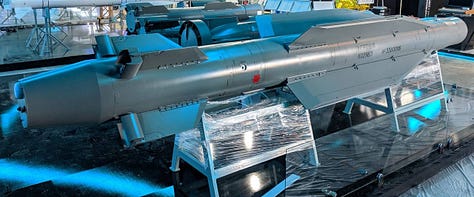
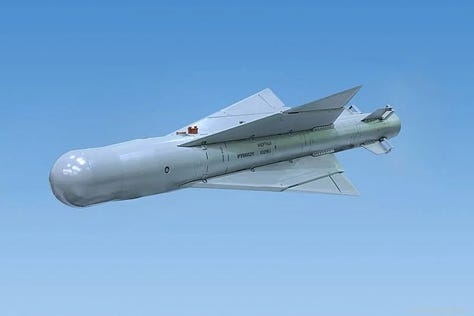
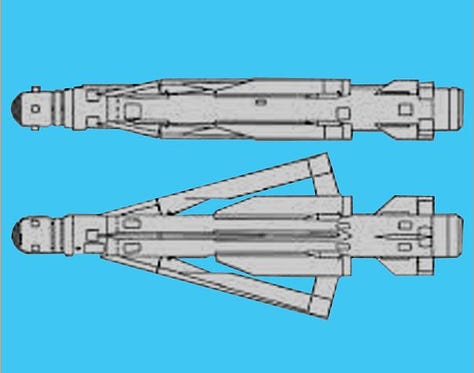
On the left you can see the bomb in normal stowed configuration with its winged panels retracted. On the right is when it’s dropped and the ‘wings’ unfold. This bomb, firstly, is a massive 1500kg in size, with a reported 1000kg+ concrete-penetrating warhead. So it’s no surprise that it’s been the Avdeevka region where it’s been spotted, as that’s where the AFU has its most hardened fortifications, and where Russia has been pushing intensely for the past week or two as noted in the last report.
“If the Ukrainian troops do not receive an order to leave Artemivsk in the near future, we will cut the road to Chasov Yar, so the city will be in the position of Mariupol. Information has already come in that our airborne forces used guided glide bombs with a capacity of one and a half tons - UPAB-1500B, ”the expert said.
According to Yuri Knutov, the use of such ammunition will make any resistance useless.
One important thing that needs to be touched on: the AFU has industrialized an ingenius method of very rapid production of pre-fab’d reinforced fortifications. Here one Russian analyst account describes the problem (autotranslated):
These ready-made structures are assembled for rapid field fortification equipment. Dig a pit, put a ready shelter with a manipulator, fill it back with soil, a meter and a half from above. And 6 fighters are in fairly safe conditions even under 152 mm fire, which can only be hit with great luck, a little to the side of the hit, and no problems for the garrison.
About 130 of these have already been shipped.
As far as I know, from our side, more wood-and-earth structures are being made, sometimes from concrete. In this regard, over the 8 years of the ATO, the Armed Forces of Ukraine have gained good experience in fortification, and, most importantly, very quickly created. In many ways, therefore, each forester's hut becomes a place of fierce battles.
That’s a photo example of one, but apparently the AFU also uses old decommissioned train/subway cars often. They dig a hole and put the whole subway car right into it, instantly creating a metallic fortified dugout which they can now reinforce further if needed, like poured concrete, etc.
So, one can see the need for such bunker-busting bombs. And a 1000kg warhead is powerful enough to destroy such fortifications often without even having to fully ‘pierce’ them.
2. The next bomb that’s been demonstrably used is a new Grom-2 (“Thunder”) glide-bomb (other designation: Kh-36/9-A-7759)
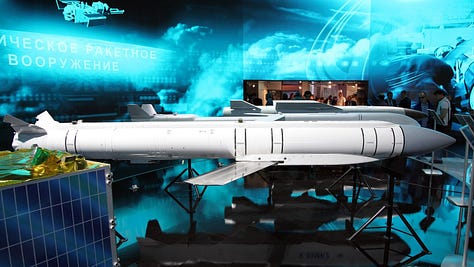

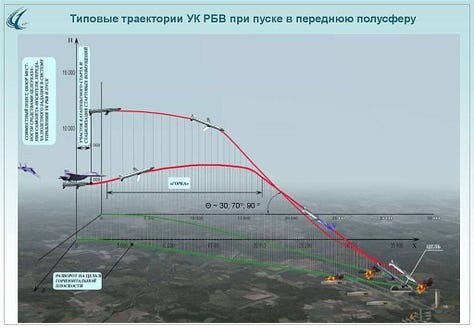
You can see the footage of a partial recovery of the bomb here: Video
This is a roughly 500kg munition meant for Su-34’s and Mig-35’s, with a range of 50-65km. It can even be used to hit targets behind the carrier:

3. The next bomb is Kab-1500LG (Laser Guided). Although this one is not a glide-bomb, it is nevertheless laser-guided with high precision. Now that AFU’s AD has been degraded to the point where Su-34’s feel confident at times to drop them from semi close range, it has reportedly seen at least some use.
This bomb was already proven with high precision in Syria as can be seen here:
4. The next bomb is an oddity. While the Upab-1500 was called Russia’s version of America’s JDAM by some bloggers, this is a misnomer as the Upab-1500 is built as a glide-bomb from the ground up rather than the ad hoc JDAM-ER kits which add wings and GPS transceivers to an old, Vietnam era MK-80 series dumb-bomb.
So, apparently Russia has now been testing its own true JDAM equivalent. There is no official designation for it yet that I know of, but these are old, dumb-fire Fab-500/1500 bombs fitted with a set of prototyped wings. Presumably Russia is experimenting with these, which appear crudely made for now, however some believe they have already gone into ‘production’ in this form. Perhaps a fast, cheap, on the fly sort of thing.
The bottom image is from a while back, showing when it was first being tested beneath Su-34’s. The above images shows the recovered bomb from days ago. There are now reports that at least 3-4 of them have been recovered, which leads to the theories of mass-production. The only problem is, some of them were recovered in yards in western Donetsk, which appears to mean the bombs have failed and fallen down, presumably launched by Su-34’s over Donetsk to hit Marinka/Avdeevka region.
If you extrapolate out—the bomb fell in west Donetsk, which means it would have had to be launched somewhere further east Donetsk, providing time for it to first glide down or malfunction/drop—from eastern Donetsk city to AFU positions in Marinka/Avdeevka is roughly 20-30km which would be in line with the potential capabilities.
But whether a few of them have dropped out of the sky or not, several top Russian analysts view this as a very positive development—and I concur. The reason is, Russia has thousands/tens of thousands of these ancient Soviet Fab-500 bombs, so if it can create a JDAM-like system to rig them with wings and guidance, it could have a gigantic preset inventory of guided munitions to lob at will with very minimal costs as these bombs are at this point worth next to nothing.
This is really very important news, which we personally have been waiting for a very long time. The effect of the use of cheap high-precision bombs is already tangible in the Avdiivka direction, where they are used. - Intel Slava
So even if a few of them have fallen, we don’t know how many are being used. Let’s say they lobbed 50-100 of them so far and 3-4 have malfunctioned—big deal, it’s still well worth it. And on top of which, they may still be experimenting and finetuning the design.
Of course there’s still the RBK-500U Drel (“Drill”) guided glide-bomb which Russia has, but there haven’t been reports of its usage yet, though we may see it soon as deliveries were set to begin in 2022 to the armed forces. This bomb is the most advanced at all and would be perfect against Ukraine’s supposedly coming armor offensive, as it’s armed with 15-20 SPBE-K sensor-fuzed sub-munitions which pop out over the given area and then self-target onto all enemy armor present (via infra-red and millimeter wave radar). A single bomb can destroy over a dozen enemy tanks if they’re grouped nearby.
The other interesting missile/rocketry news is that Russia reportedly fired upwards of 6 or more Kinzhal hypersonic missiles during its landmark strikes last week. Here’s a video of AFU spokesman Yuriy Ignat attesting to this fact.
Soon after, however, very interesting reports began to appear:
Now this is all uncorroborated of course, but if you put the actual known and confirmed pieces together, it does paint an intriguing picture:
We know Kinzhal in the past has been only rarely used against very sensitive and heavily reinforced (underground) targets. Here’s a Reuters article from early in the war which reports Russia’s first-time use of the missile against an underground weapons depot. Here was one of the pieces of footage released at the time:
Whatever it was, hit the building at an incredible rate of speed.We have the full confirmation from an AFU spokesman that half a dozen Kinzhals were in fact used. So putting the pieces together, we can deduce it was likely against something sensitive, the NATO command center story begins to have at least some plausibility.
Further, a bizarre video has been released claiming to show a Kinzhal in flight.
But what’s most interesting is it seems to very closely match a video that too appeared last year precisely after the first alleged Kinzhal usage:

So either someone is continually perpetrating an elaborate video hoax or we are witnessing the same weapons system being used.
But there’s some problems. Firstly, the Kinzhal (“Dagger”), which many believe is based on the Russian Iskander-M (mostly a modified, air-dropped version thereof), would basically be an air-dropped ballistic missile, with attendant ballistic trajectory, which usually goes as follows:
So you likely wouldn’t see the missile heading in such a horizontal low altitude flight trajectory.
Secondly, and most importantly, there is probably nothing on Earth that can reach hypersonic speeds at or near sea-level in the way these videos appear to show because the air is too dense and would cause the complete meltdown/collapse of the object. They reach hypersonic only at ‘burn-out’ stage, which in the Kinzhal’s case is upwards of 60-80k feet, where the atmosphere is very thin.
One of the only looks we have of how hypersonic works is the old US ‘Sprint’ anti-ballistic missile from the 70’s. Footage shows it heating up with the infamous plasma-shield associated with hypersonic velocities, which it reaches (Mach 10) within 5 seconds.
It is however oddly similar to how the alleged ‘Kinzhal’ videos look above. One source I saw even claimed it wasn’t just Kinzhal but Zircon that was used. Zircon is a more traditional ‘hypersonic missile’ in the sense of being an actual missile, with ram/scram-jet engines and traditional trajectory rather than the quasi-ballistic missile that is the Kinzhal. So who knows, that could be a Zircon witnessed in the video. For now it remains an interesting curiosity to keep an eye on.








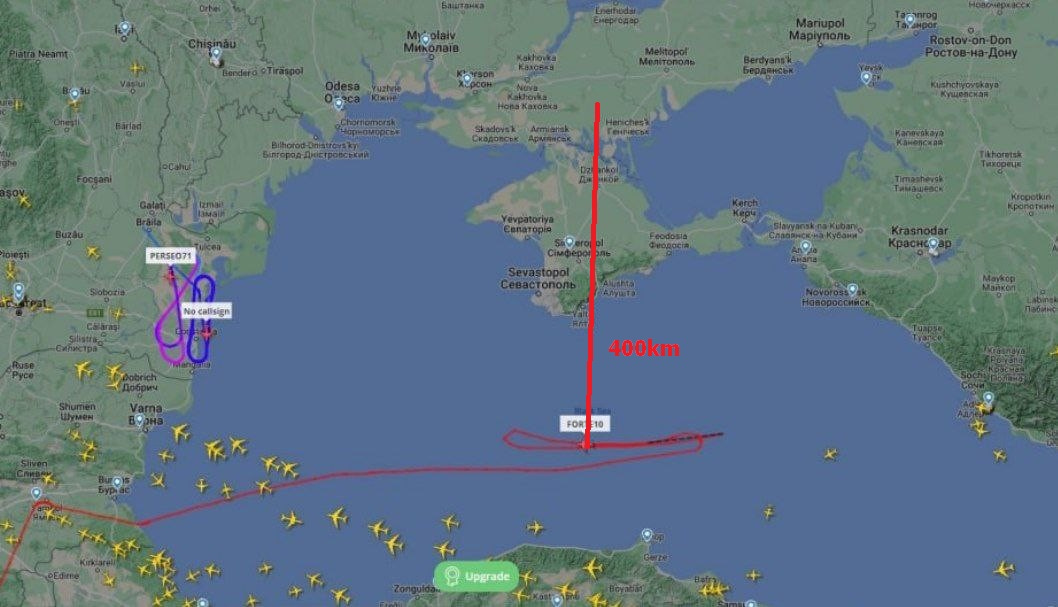
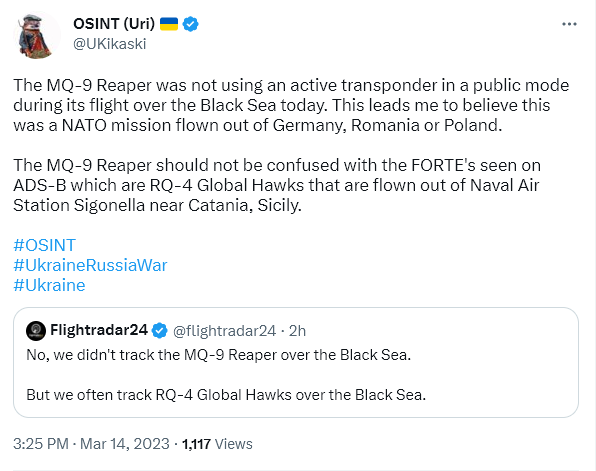

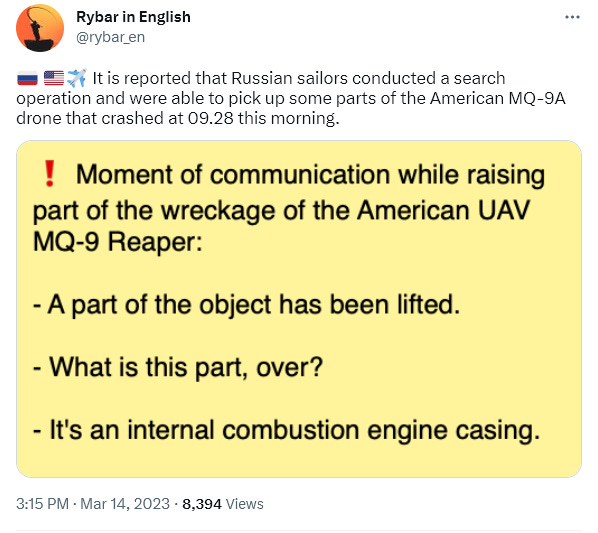
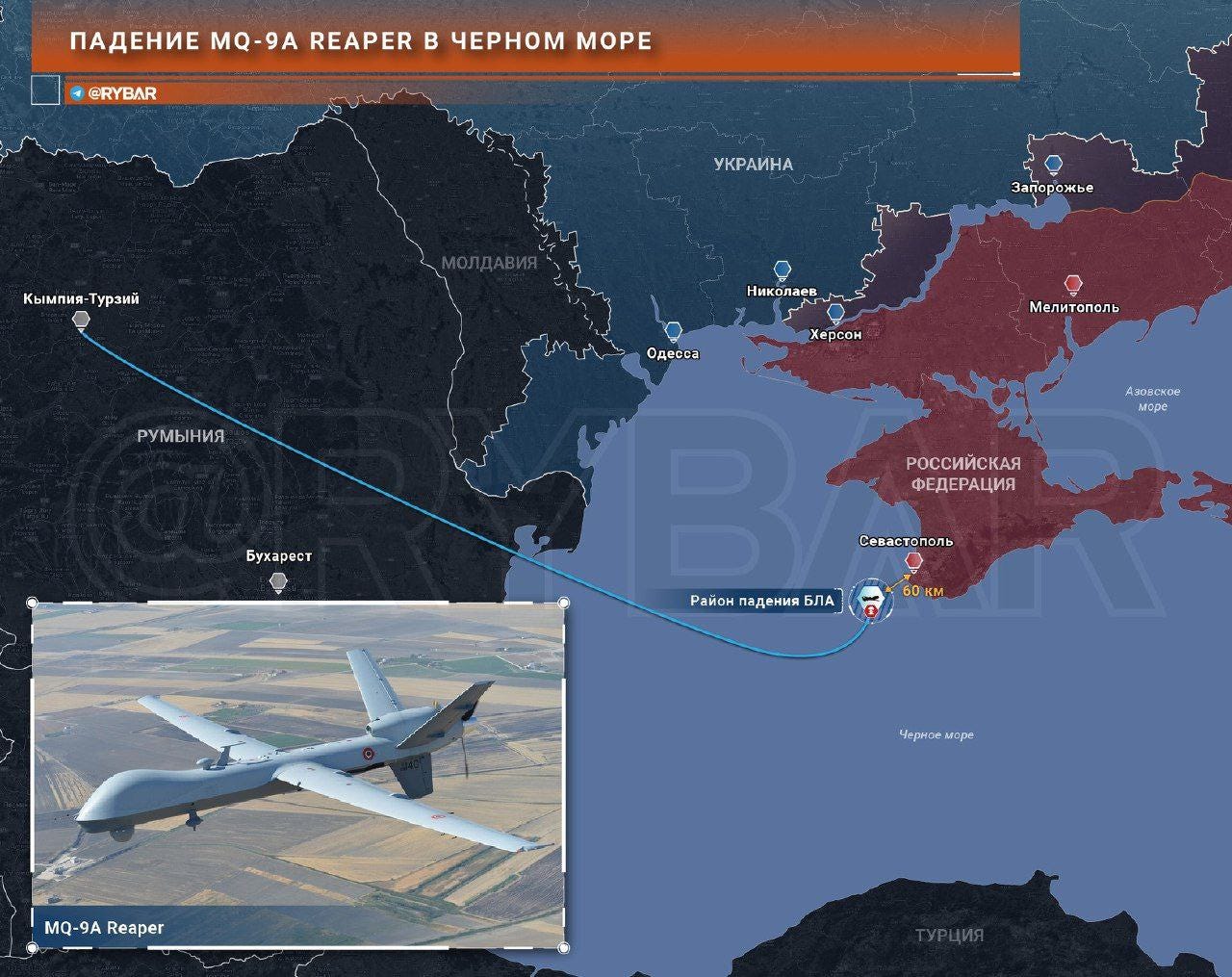

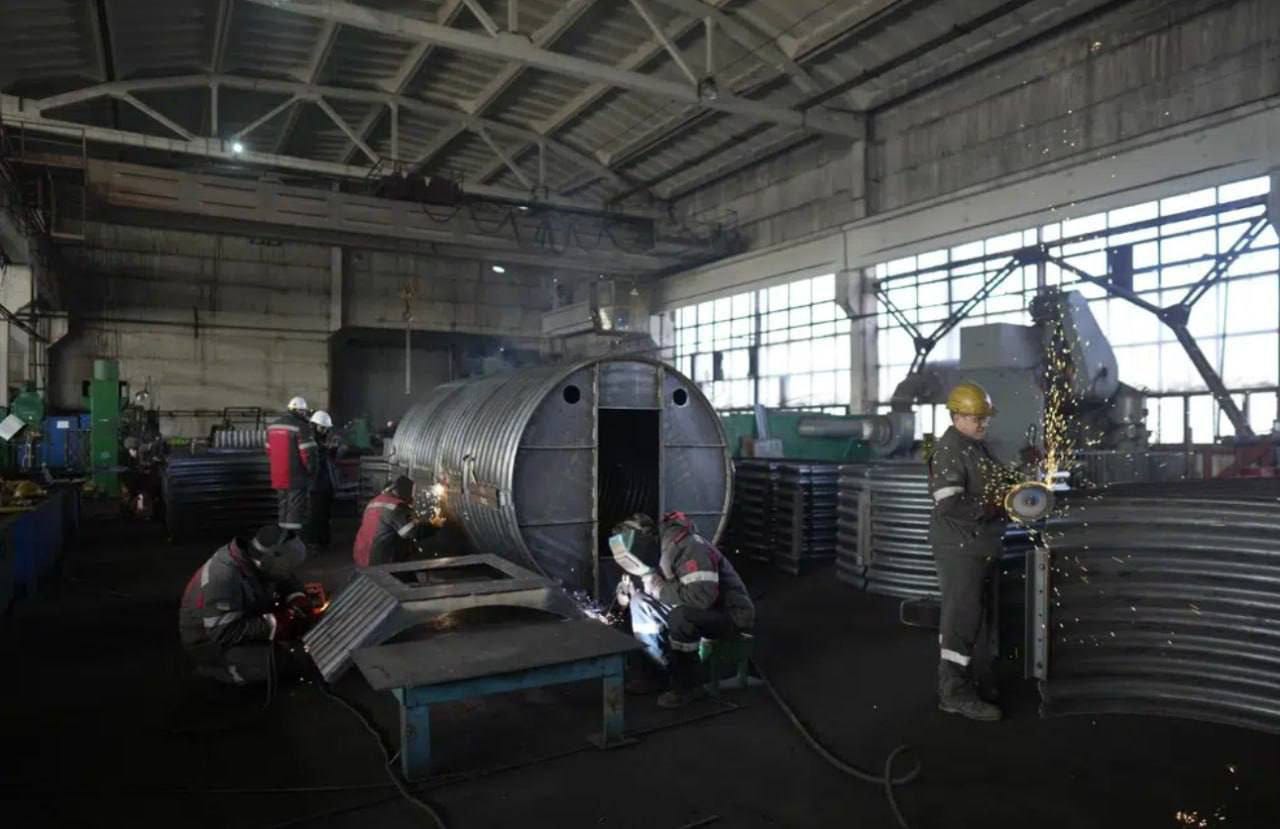
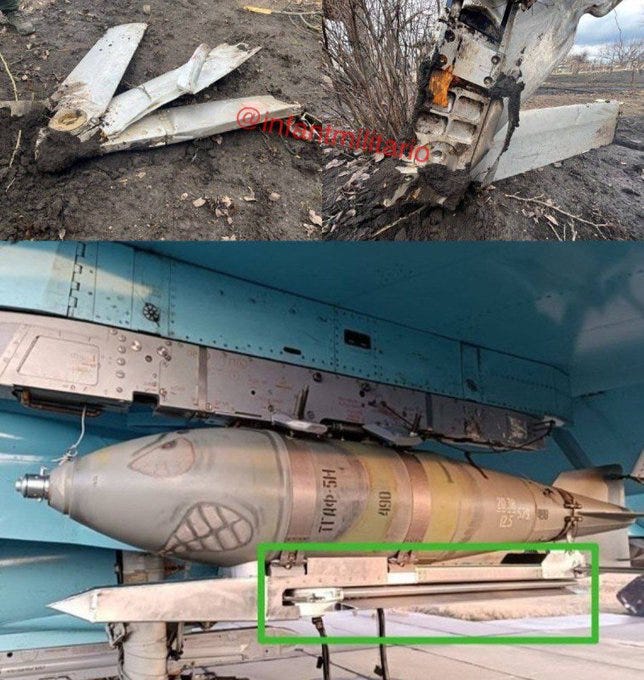



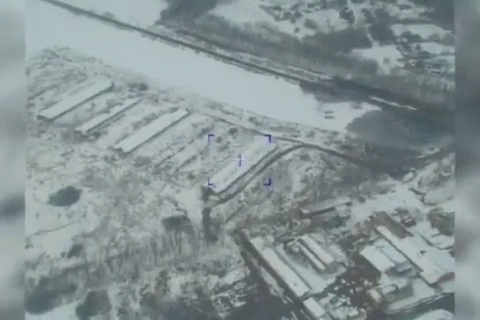



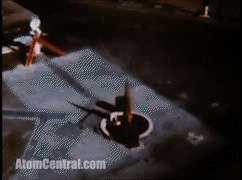
PS for all who've read the article, check the update added towards the bottom of the first section on the drone downing, I edited in some intriguing tidbits.
its about time, I've been wondering why they haven't done this sooner. They wanna be cute and wage a proxy war while sitting comfortable oceans away, then such "accidents" should be more frequent. Call it freedom of navigation.